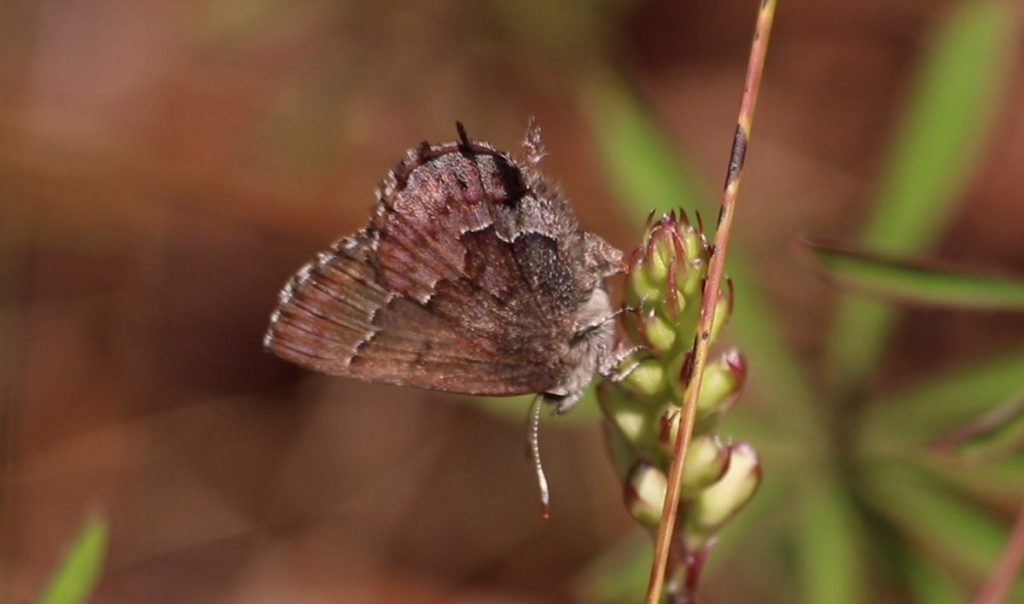Finding the rare sandhills cellophane bee – with data
A couple months ago, I decided to undertake a mission. It started with a curiosity: I wanted to know how researchers use iNaturalist data. This wasn’t the mission – it was a segment idea, but it led me there. I talked to biologists to identify species of interest to them, things I could find as winter turned to spring. The plants and animals they told me about all happened to be inhabitants of the sandhill habitat.
The first was a butterfly familiar to me. The frosted elfin is disappearing from its range, and researchers are searching for its host plant. The more places they find sundial lupine, the more places where they might find elfins trying to lay eggs on them.

Next, I talked to botanists who recently discovered three new species of lupines. Many of the plants had previously been identified as other lupine species; now researchers are reclassifying existing iNaturalist records and seeking out new locations. The new species are in the Florida peninsula, far from where I live.
Then there’s the sandhills cellophane bee. This bee was discovered a few years ago, yet it doesn’t have many known sites. Like the species I previously mentioned, it’s a sandhill inhabitant. But it specializes in the flower of a plant that grows in cypress wetlands. It needs the two habitats in close proximity, which limits the potential locations where we might find it.
I love photographing bees, especially when I can find a rare or uncommon species. The sandhills cellophane bee – this was the mission.

